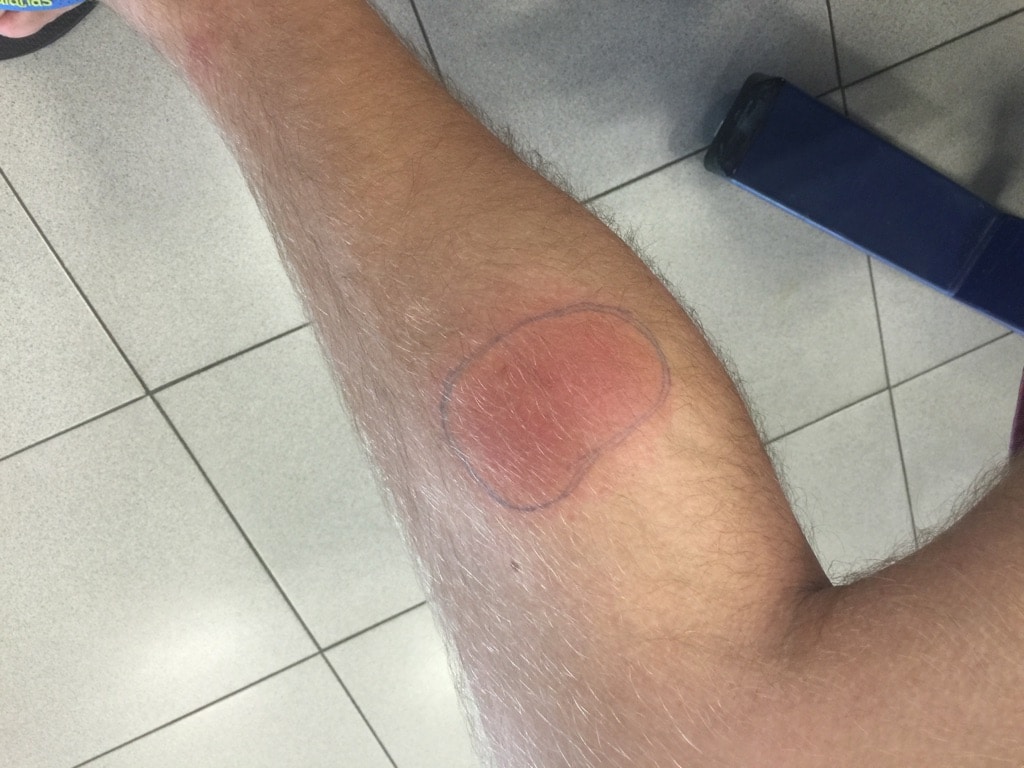Borreliosis (Lyme disease)

What is borreliosis?
Borreliosis, also called Lyme disease, is the most common tick-borne disease in Norway and Europe. The disease is caused by a group of bacteria called Borrelia bacteria, which can be transmitted to both animals and humans through tick bites. Borrelia is widespread in the Northern Hemisphere. You can therefore become infected both in Norway and abroad. There are more than 30 different genospecies of Borrelia bacteria, but only some of the species cause disease in humans. In Europe and Asia, Borrelia afzelii and Borrelia garinii are the most common genospecies, but there are also other species that can cause disease (for example Borrelia burgdorferi sensu stricto, Borrelia spielmanii, and Borrelia bavariensis).
In 2023, there were 568 reported cases of systemic borreliosis in Norway (neuroborreliosis, borrelia arthritis, ACA, borrelia carditis etc). In addition, at least 7000 Norwegians are diagnosed with Erytema migrans every year. Erythema migrans is a skin infection (red rash) caused by the borrelia bacteria. Erythema migrans is the most common form of borreliosis in Norway/Europe (accounts for 95% of all borreliosis cases).
Symptoms of borreliosis
Borrelia usually only causes a skin rash, but can also give infektion the nervous system, joints and, rarely, the heart. See a doctor if you get symptoms of borreliosis after a tick bite. Borreliosis should be treated with antibiotics.
Erythema migrans
This red rash is the most common and often the only symptom of Lyme disease. This is a mild skin infection. The rash grows at the site of the tick bite, is larger than 5 cm, and occurs approximately 3-30 days after the tick bite. The shape, size, and color of the rash vary greatly. Additional symptoms such as malaise, headache, and muscle and joint pain may occur. At least 7,000 Norwegians get EM every year.
Borrelia lymphocytoma
Red/purple swelling in the skin (0.5 – 3 cm) that usually occurs on the earlobe, tip of the ear or nipple. This is a mild skin infection. Occurs days to months after a tick bite. Often near the tick bite. It is rare but more common in children.
Neuroborreliosis
Borreliainfection in the nervous system. Symptoms can vary depending on which nerves or brain membranes are affected. Symptoms typically occur weeks to a few months after a tick bite. The most common is facial nerve paralysis, the next most common is nerve inflammation causing significant pain in the neck/back, with radiating pain in the arms, legs, or as a belt from the back to the abdomen. Changes in sensation in the skin in the painful areas are common. Other paralysis and difficulties with coordination may also occur. Other common symptoms are headache, light sensitivity, neck stiffness, lethargy and feeling sick.
Borrelia arthritis
Borreliainfection in the joints. Inflammation in one knee joint is most common. One can also get inflammation in other large joints. The inflamed joint will often become very swollen and warm. It is not unusual for the swelling/pain to come and go in periods.
Acrodermatitis Chronica Atrophicans (ACA)
Red/purple/bluish inflammation of the skin that persists for many months/years. Most common in elderly women. ACA can damage the subcutaneous tissue causing the skin to become paper-thin and look old. Simultaneous muscle, joint and nerve pain (polyneuropathy) is also common.
Borrelia carditis
Borreliainfection in the heart. Can cause varying degrees of cardiac arrhythmias
How is borreliosis diagnosed and treated?
- If you develop a red rash (Erytema migrans) around the tick bite, that is larger than 5 cm, it’s important to schedule an appointment with a general practitioner. Blood tests are not required.
- If neuroborreliosis is supected it is necessary to be referred to a hospital for further evaluation. Both a blood test and a lumbar puncture should be taken and tested for Borrelia specific antibodies (antibody test).
- If borrelia arthritis is suspected, referral to a rheumatologist is recommended. A blood test (antibody test) is necessary. Additionally, a sample of synovial fluid should be taken and tested using a DNA test (PCR).
- If ACA is suspected, a blood test (antibody test) is necessary. Patients with ACA typically have high antibody levels. A general practitioner or dermatologist can also take a skin biopsy of the rash, which is tested for Borrelia DNA using PCR (polymerase chain reaction).
- All symptoms of borreliosis can be effectively treated with antibiotics. Erytema migrans is usually treated with Penicillin. Neuroborreliosis, borrelia arthritis, ACA etc is usually treated with Doxycyclin.